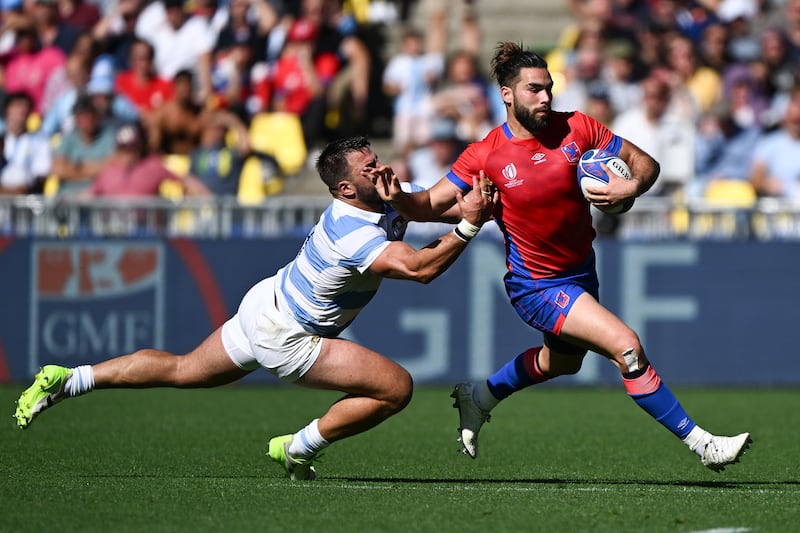When it comes to the proposed new Nations League competition in international rugby, the proof will be in the pudding. However, anything that achieves greater unity in the global game, while adding value to international ‘friendlies’ and generating more income for the sport, probably has to be viewed in a positive light.
Finally, the World Rugby Council has agreed to the long-discussed new biennial international competition from 2026. This will comprise a top division of 12 teams, made up of the Six Nations unions, the four Sanzaar unions and two further unions to be selected via a process run by Sanzaar, which will most likely be Fiji and Japan initially.
These 12 countries are, currently, the top ranked 12 teams in the world rankings. Admittedly, there is quite a gap between them and the rest in the rankings, and only time will tell if the creation of a second division will bring standards up sufficiently to justify the Council’s decision to also expand the Rugby World Cup from 20 to 24 teams from 2027 onwards.
The second division of 12 teams in the new Nations League (the competition title is still to be decided) will be run by World Rugby, with promotion and relegation between the two divisions commencing from 2030, and thus coming into effect in 2032, which does seem like a very long time away. Nevertheless, by World Rugby standards and the closed gate into the elite tier, this does offer progress of sorts.
The Counter Ruck: the rugby newsletter from The Irish Times
Matt Williams: Ireland must avoid arrogance and pay England the respect they deserve
Owen Doyle: Give the scrum back its purpose or risk damaging the Six Nations - and Australia’s regeneration
Matt Williams: Stopping great teams from playing the way they can play is exceptionally difficult
There is also a commitment toward a 50 per cent increase in crossover matches between Tier 1 and Tier 2 teams but in all of this, World Rugby chief executive Alan Gilpin admitted: “No agreement has been signed, principles have been agreed on how those fixtures can be allocated but there’s a lot more work to do.”
The first division of this new competition will initially see each country play six matches which are distinct from, and complement, both the Six Nations and the Rugby Championship. It will incorporate three fixtures apiece in the July and November windows, with the champions decided on a points system also yet to be agreed upon.
The new competition will be played in non-World Cup and non-Lions years, and from 2030 will lead to a final round of playoff matches, including a final. They are set to be played in Europe given that all participating teams will be based there in the competition’s concluding November window.
The additional week from 2030 onwards will be achieved by compressing the Six Nations from a seven-week window into one of six weeks, which admittedly hardly seems commensurate with player welfare. The second division will also be played in the July and November international release windows.
So, what will all this look like for Ireland? To simplify things, from 2026 onwards, every two years, they will begin their calendar with the Six Nations. Then, separate from this, they will play three matches in the southern hemisphere, potentially in two or three countries, thus doing away with three-Test tours. In November, they will host three games, before taking part in a playoff match from 2030 onwards.
As with the men’s game, there will be a dedicated women’s calendar from 2026 aligning the international and domestic games. So, in addition to the Six Nations, there will be an eight-week window in August/September for the Irish women’s team to play warm-up matches before competing in the divisional WXV.

There will be clearly defined player release periods for the first time, with no domestic competition overlap, ahead of an expanded 16-team Women’s Rugby World Cup in 2025.
Despite the expansion of the men’s World Cup, the tournament will be reduced in length and matches by one week, which Gilpin admitted “sounds counterintuitive”. But this will be achieved by having six pools of four, with each country playing three matches each, as a prelude to a round of 16 followed by quarter-finals, semi-finals and a final. So presumably in addition to the top two in each pool, the four best third-placed teams will also advance to the last 16, in other words 36 matches to eliminate eight teams!
The draw for the 2027 tournament, which will run from October 1st to November 13th, will take place in January 2026, effectively a year later in the next World Cup cycle than was the case for France 2023 – a tacit admittance that the latter was conducted prematurely.
Australia will host the 2027 World Cup and the 2031 tournament will take place in the USA. The World Cup’s expansion did not include any detail as to how these additional four qualifying places will be achieved, but undoubtedly this is to ensure that the USA Eagles don’t miss out again, as they did in France 2023.
Gilpin also maintained that the expansion did not rule out the possibility of a country such as New Zealand hosting a World Cup in the future, or by extension Ireland. But in reality, if Ireland could not succeed in its bid to host this year’s World Cup, it’s hard to envisage how it could do so with an expanded tournament.
In reality, for Ireland to ever host a World Cup it would have to be in a joint bid – say a Celtic or UK/Irish bid – post-2031. Interestingly, some of the Italian, Portuguese and Spanish media reported on Tuesday that those countries have stated their desire to host the World Cup in 2035. Indeed, this was a back-page lead in the Spanish sports daily Marca.
The vote at the World Rugby Council meeting to bring into being a biennial competition and endorse an expansion in the World Cup only narrowly achieved the requisite two-thirds majority.
It is understood that one Tier 1 union/federation voted against, and most likely this was Agustin Pichot and Argentina, out of concerns for rugby in South America. Uruguay and debutants Chile have been entertaining competitors at France 2023, but neither are part of a new annual men’s 15s competition – effectively an expanded Pacific Nations Cup – involving Canada, Fiji, Japan, Samoa, Tonga and USA, which will be launched in 2024.
The International Rugby Players welcomed some aspects of World Rugby’s new initiatives, albeit that they were imperfect.
Chief executive Omar Hassanein said: “We must recognise that the newly proposed model is better than the status quo and represents progress in the game. Having said this, we feel that more detail needs to be provided in relation to the increased opportunities for teams ranked 13 to 24, to pitch themselves against Tier 1 opposition.”













